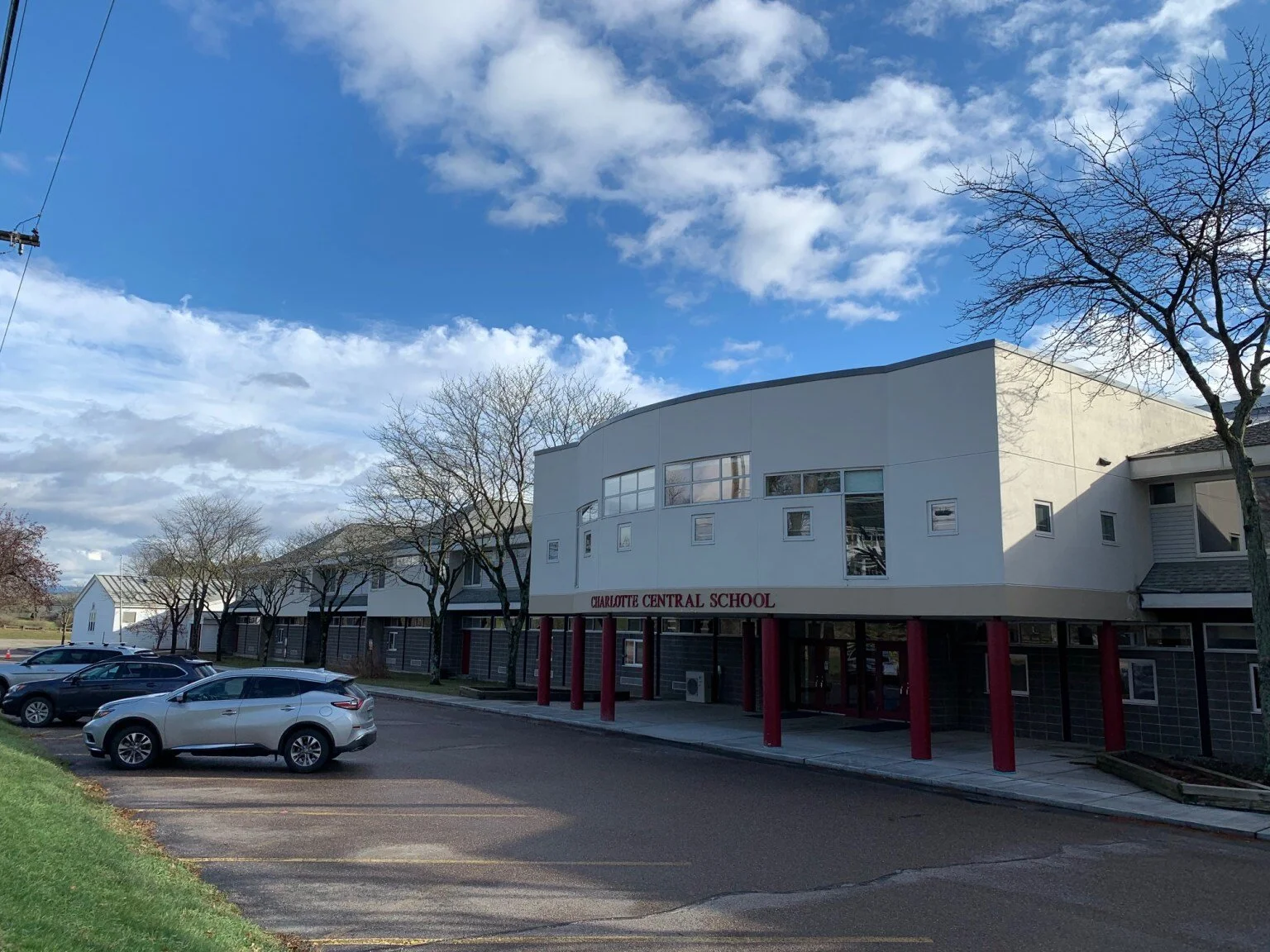As Hinesburg virtual teaching equity improves, Charlotte parents bring similar concerns
Charlotte Central School. Photo by Erin Gallagher.
Charlotte parents have raised concerns that their children are getting an inequitable amount of live instruction time compared to other schools in the district, echoing concerns Hinesburg parents previously raised to school officials.
Both schools have been using a hybrid model the past few months. This means that students get two days in person in their school, and three days of online learning, which can be a blend of live meetings with teachers, and individual activities.
Though the situation at Hinesburg Community School has improved, that at Charlotte Central School has not, said Meghan Metzler, a parent of a CCS middle grade student.
“We continue to be told that there are no problems,” she said.
Since the October school board meeting where Hinesburg parents confronted officials with claims of unequal instruction time, a breakdown of the number of minutes students spend live with a teacher (“synchronous” minutes) on remote days at each school in the district has been released by administration. This breakdown was not seen as accurate by some CCS parents.
“On no day do they have more than 90 minutes of synchronous learning, far short of the reported 180 minutes,” said Metzler.
This discrepancy, wrote CVSD superintendent Elaine Pinckney in an email, is due to definitions of “synchronous” and “asynchronous.”
“From our perspective, there are 60 minutes that we are calling synchronous because it is one of their teachers providing a lesson (science and digital citizenship) that students can access at their convenience,” she wrote. This means that 60 minutes of the students’ remote day is meant to be spent watching a pre-recorded lesson created by their teacher.
At the beginning of the meeting, board chair Lynne Jaunich said that Superintendent Pinckney and the CCS administration have a meeting planned with parents, as well as a town hall at some point in the near future.
Parents did not know this was planned, said Matt Weston, another CCS parent.
Several parents said they agreed with Metzler’s statement, and that their students are not getting sufficient instruction time.
“My impression is that the staffing is stretched to their max right now. I think the teachers are doing the very best they can and they need to be supported,” said Raina Donahue, a parent of a seventh grader at CCS.
Along with the parent meetings coming up, a few other changes are in progress, wrote CCS principal Jennifer Roth in an email.
“Since the start of this year, we have continuously adapted our academic programming for students to address not only their academic needs but also their social/emotional and habits of learning in this challenging world of virtual learning,” Roth wrote.
Recently, seventh and eighth graders have begun to have advisory check-ins each morning, Roth wrote. After Thanksgiving break, there will be more essential arts synchronous instruction, as well as additional humanities instruction time, she wrote.
“What I hope people take the time to recognize is the dedication and care each of our educators is giving to their students (all while juggling many challenges of their own),” wrote Roth.
Improvements in Hinesburg
After holding a 5-8 parent forum similar to that proposed for CCS, Hinesburg Community School was able to implement some changes to the hybrid model at the middle level, said HCS principal John Pontius.
“The parent forum helped me to understand that we need, in Hinesburg, we needed to provide academics on Wednesdays to help make up for what we were unable to provide on the other two remote days because of our structure,” Pontius said.
Now on Wednesdays, students meet remotely with core academic teachers until 11:45, then specific students receive specialized interventions, like counseling or additional academic support, he said. Wednesdays were initially focused on social/emotional learning, but HCS has shifted the focus to academics on those days. Clubs also recently started, he said.
More changes will start on Dec. 7, said Pontius.
“Each student on their remote day will have a 40 minute, an additional 40 minute class with our librarian or our school counselor or health teacher or teacher,” he said.
seventh and eighth graders, he said, will also get an additional 30 minute class each remote day in a subject related to the teacher’s core area. “For instance, my math teachers are going to teach finance,” Pontius said.
This was made possible because fifth and sixth graders returned to the building four days a week as of Nov. 16. A teacher is freed up to teach, said Pontius, while the fifth and sixth grade students are out at recess.
“We have stretched our schedule and staffing to allow one core teacher and one EA teacher to each offer a 30-minute class to remote students—adding an additional hour of live instruction,” wrote Tom Darling, a sixth grade teacher, in an email.
These changes took a while to implement because Pontius and his staff wanted the material being taught to be “meaningful.”
“The communication has definitely improved as well,” said Kate Webster, an HCS parent. She said that last month’s school board meeting gained HCS parents a greater sense of understanding.
These changes on the remote days would likely not have been possible had the fifth and sixth graders not returned four days a week, Webster said.
“Because the live online class is also limited in both time and maneuverability we are constantly reconsidering what quality instruction looks like,” wrote teacher Tom Darling.“There is no substitute for live, in-school classes five days a week,” Darling wrote.
You can find this story published in the Hinesburg Record.








